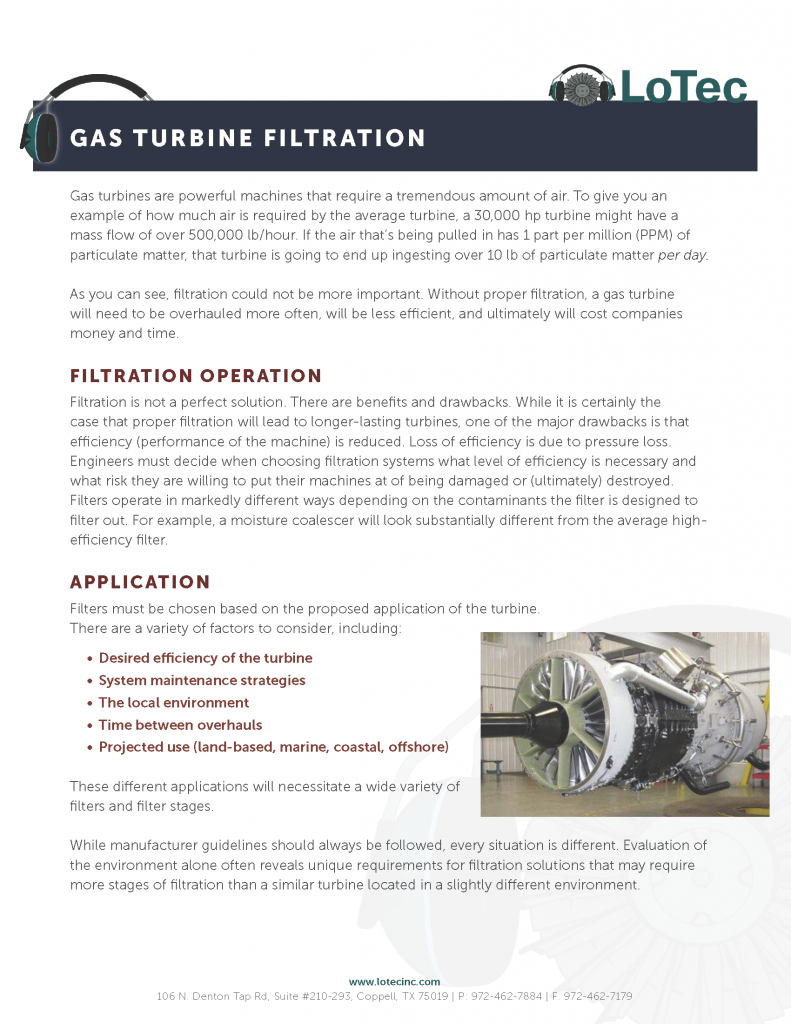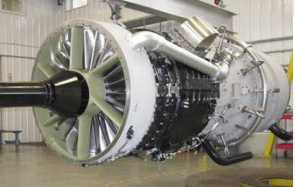Gas turbines are powerful machines that require a tremendous amount of air. To give you an example of how much air is required by the average turbine, a 30,000 hp turbine might have a mass flow of over 500,000 lb/hour. If the air that’s being pulled in has 1 part per million (PPM) of particulate matter, that turbine is going to end up ingesting over 10 lb of particulate matter per day.
As you can see, filtration could not be more important. Without proper filtration, a gas turbine will need to be overhauled more often, will be less efficient, and ultimately will cost companies money and time.
Filtration Operation
Filtration is not a perfect solution. There are benefits and drawbacks. While it is certainly the case that proper filtration will lead to longer-lasting turbines, one of the major drawbacks is that efficiency (performance of the machine) is reduced. Loss of efficiency is due to pressure loss. Engineers must decide when choosing filtration systems what level of efficiency is necessary and what risk they are willing to put their machines at of being damaged or (ultimately) destroyed.
Filters operate in markedly different ways depending on the contaminants the filter is designed to filter out. For example, a moisture coalescer will look substantially different from the average high-efficiency filter.
Application
Filters must be chosen based on the proposed application of the turbine. There are a variety of factors to consider, including:
- Desired efficiency of the turbine
- System maintenance strategies
- The local environment
- Time between overhauls
- Projected use (land-based, marine, coastal, offshore)
These different applications will necessitate a wide variety of filters and filter stages. While manufacturer guidelines should always be followed, every situation is different. Evaluation of the environment alone often reveals unique requirements for filtration solutions that may require more stages of filtration than a similar turbine located in a slightly different environment.


